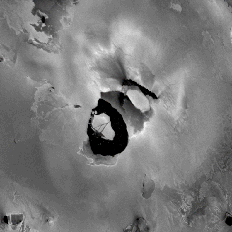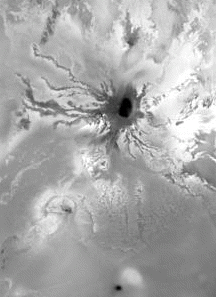This is an image of the volcano Loki.
Click on image for full size
NASA
Volcanism of Io
Io has active volcanism. It is the only body in the solar system other than the Earth known have active volcanic features. As shown in this picture, the surface is formed almost entirely of volcanic flows or pools of volcanic material.
The volcanism of Io provides another example of a prominent kind of volcanism found on Earth, namely the formation of geysers. The two kinds of volcanism on Io are:
- volcanoes, which form from rocky-silicate magmas similar to those of Earth
- geysers, spouting liquid SO2 instead of liquid H2O.
Hotspots of Io reveal where the volcanoes are. The most well known and active volcanic features of Io are:
You might also be interested in:

How did life evolve on Earth? The answer to this question can help us understand our past and prepare for our future. Although evolution provides credible and reliable answers, polls show that many people turn away from science, seeking other explanations with which they are more comfortable.
...more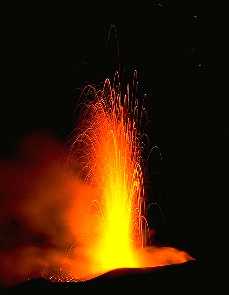
Lava is the word for magma (molten rock) which is on the surface of the Earth. After being released from the magma chamber and cooling, lava hardens into rock. The term lava can describe active flows,
...more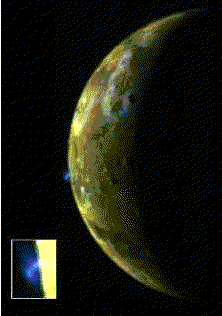
When Voyager flew by Io the surprise discovery was the geyser, Prometheus, in full eruption. Geysers such as Prometheus spout pools of liquid around the vent, rather than a channel of lava. Features which
...more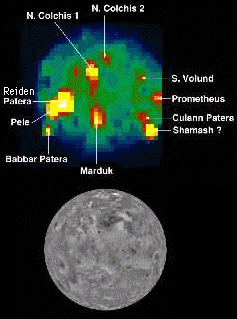
Hotspots measured in the infrared help scientists know where the volcanoes & geysers of Io are actually located. This picture shows an infrared map of Io at the top, and the same image of Io, in visible
...more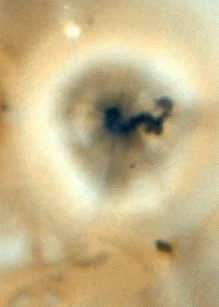
This is an image of the geyser, Prometheus. The black marking in the center of the image is the mouth of the geyser. This opening is encircled by a pool of material.
...more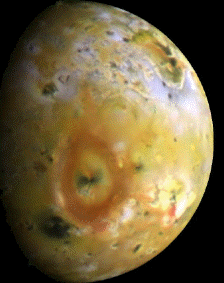
In the foreground of this image is shown the geyser, Pelee.
...more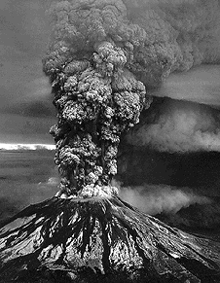
Let's look at the evidence: Mercury Venus The Moon Mars Io Europa Ganymede Callisto Triton Miranda What about Jupiter, Saturn, Uranus, Neptune, Titan, or Pluto? These planets or moons either have no surface,
...more


